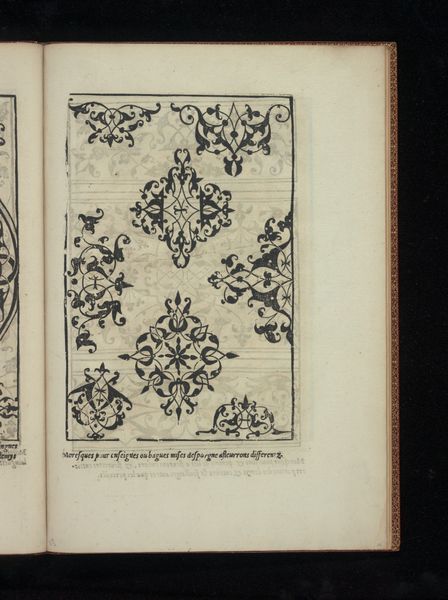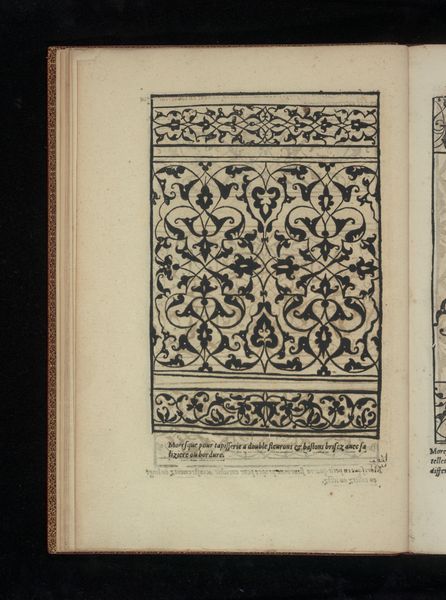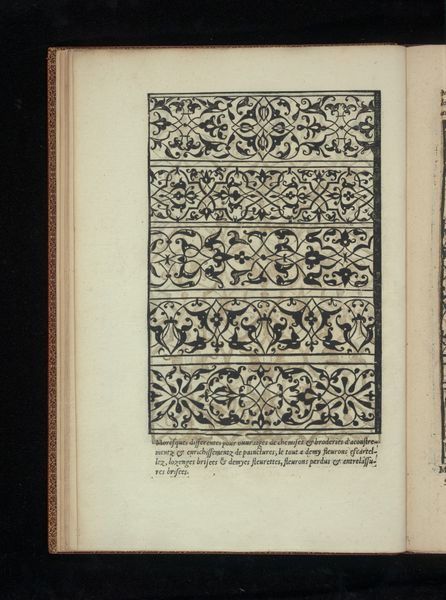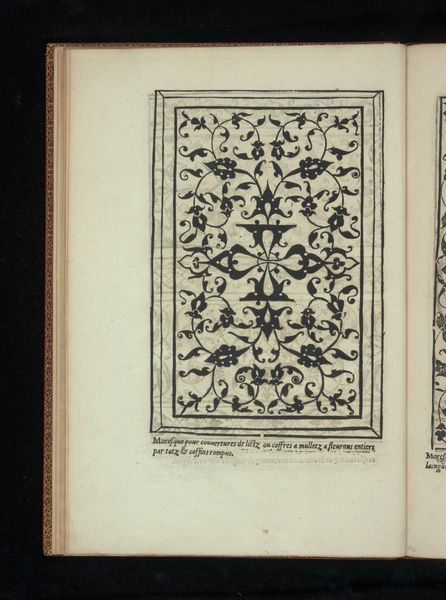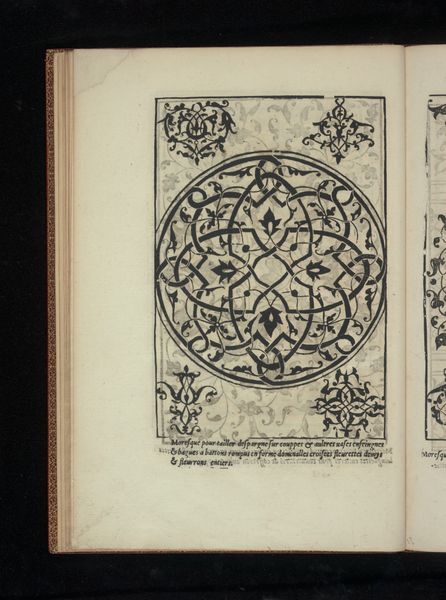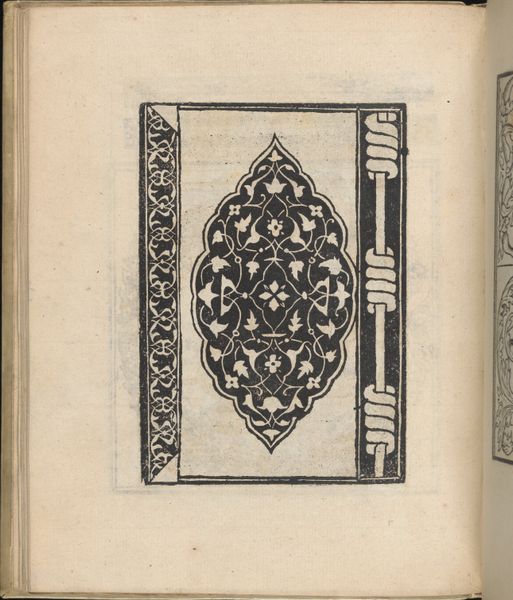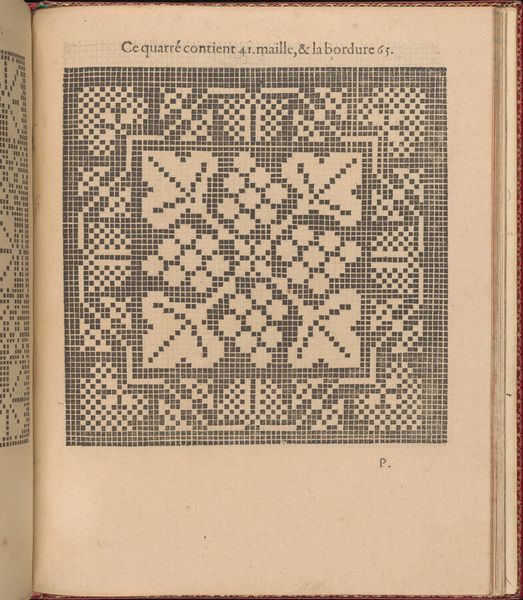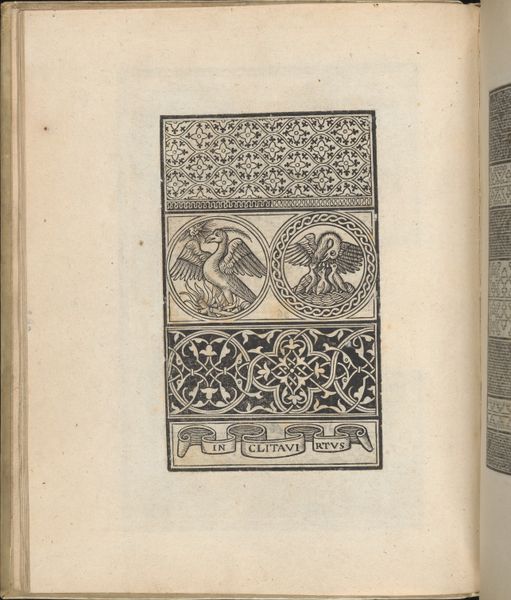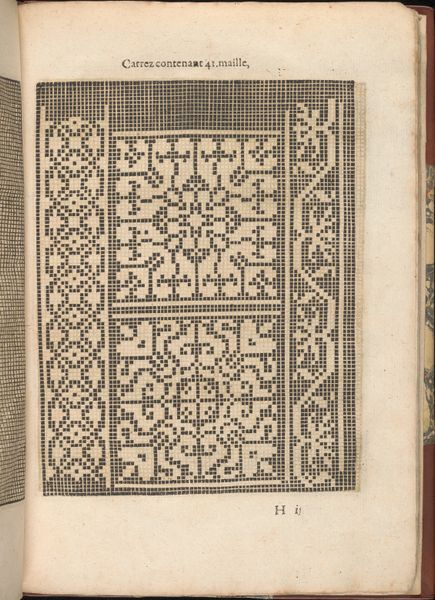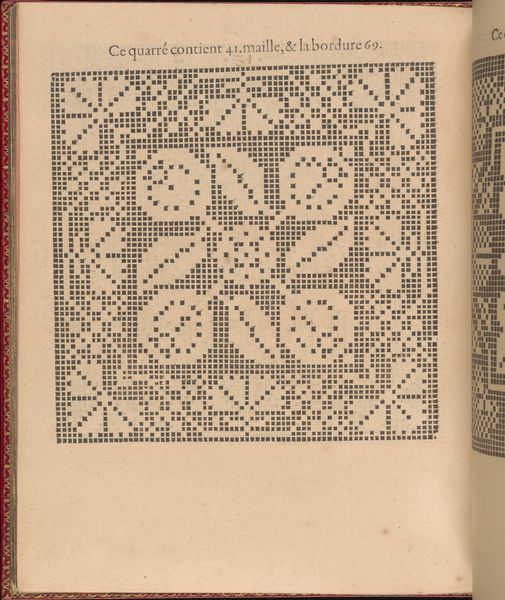
drawing, ornament, print, paper, ink
#
drawing
#
aged paper
#
ornament
#
pen drawing
# print
#
pen sketch
#
book
#
sketch book
#
paper
#
11_renaissance
#
personal sketchbook
#
ink
#
geometric
#
pen-ink sketch
#
france
#
pen and pencil
#
men
#
pen work
#
sketchbook drawing
#
islamic-art
#
sketchbook art
Dimensions: Overall: 12 x 8 5/16 x 1/4 in. (30.5 x 21.1 x 0.7 cm)
Copyright: Public Domain
Curator: Let's turn our attention to "Livre de Moresques, page 15 (recto)," a work created in 1546 by Francesco di Pellegrino, currently housed at the Metropolitan Museum of Art. This captivating piece uses ink on paper to display intricate geometric patterns. Editor: Wow, it’s like peering into a forgotten dream! There's a hauntingly beautiful fragility to it; the delicate lines against the aged paper almost whisper stories. Does it feel like looking through time to you, or is that just me? Curator: It definitely resonates across time. This particular page originates from a book of moresques, which were essentially pattern books, deeply influenced by Islamic art and adapted for use in European decorative arts, like embroidery, painting, and even metalwork. The term 'moresque' itself highlights the West’s encounter with and interpretation of Moorish, or Islamic, artistic traditions. Editor: Ah, that's where that feeling comes from. It's wild how one culture takes something and filters it through its own lens! There's such a defined structure underlying all the floral curlicues. The contrast almost makes me laugh, it is both playful and highly organized. Curator: Absolutely! And there is some complex intersectionality. These pattern books facilitated the circulation of artistic ideas across cultural and religious boundaries. They represent a fascinating moment in the history of cultural exchange, revealing both appropriation and adaptation of Islamic motifs within a European context. Furthermore, we must consider access to and authority of this translation in relationship to gender, race, and socioeconomic lines during the Renaissance. Editor: It is sort of mind-bending, isn't it? I love how something so simple—pen on paper—can hold so much history, those layers of influence that echo through centuries! I think I need to go home and start sketching my own strange, historical patterns. Curator: It does open avenues to re-interpret historical norms and values through art making. What a great place to start a conversation.
Comments
No comments
Be the first to comment and join the conversation on the ultimate creative platform.
